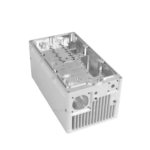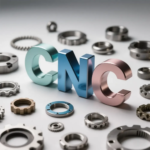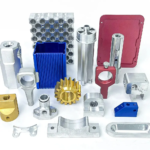When it comes to 3D printing, choosing the right filament or particles can be a daunting task. With an overwhelming array of options available in the market, it’s crucial to understand the different types of filaments and particles, their properties, and how they impact the quality and durability of the final product. In this article, we’ll delve into the world of filaments and particles, exploring the most popular options, their characteristics, and use cases.
PLA: The Eco-Friendly Alternative
PLA (Polylactic Acid) is a bioplastic, derived from renewable resources such as corn starch, sugarcane, or potato starch. It’s a popular choice among 3D printing enthusiasts due to its eco-friendly nature, low warping, and relatively easy printability. PLA is a versatile material, suitable for printing a wide range of objects, from small prototypes to large-scale productions.
ABS: The Versatile Standard
ABS (Acrylonitrile Butadiene Styrene) is a thermoplastic, widely used in 3D printing, injection molding, and other industries. It’s known for its durability, impact resistance, and flexibility. ABS is often used for printing functional parts, such as gears, mechanisms, and mechanical components. However, it can be more challenging to print due to its tendency to warp and exhibit high shrinkage.
PETG: The Flexible Alternative
PETG (Polyethylene Terephthalate Glycol) is a sugar-based bioplastic, similar to PLA. It offers improved flexibility and durability compared to PLA, making it an excellent choice for printing flexible products, such as phone cases, watch straps, and other accessories. PETG is also more resistant to moisture and has a lower coefficient of thermal expansion, reducing warping and making it easier to print.
TPU: The Elastomeric Option
TPU (Thermoplastic Urethane) is a synthetic rubber-based material, offering exceptional flexibility and elasticity. It’s often used in applications that require high tensile strength, resistance to abrasion, and UV stability. TPU is perfect for printing products like footwear, gaskets, and seals. However, it can be challenging to print due to its high temperature requirements and tendency to deform during cooling.
Nylon: The Strong and Durable Option
Nylon is a synthetic thermoplastic, renowned for its exceptional strength, stiffness, and resistance to abrasion. It’s often used in high-performance applications, such as in the aerospace, automotive, and industrial manufacturing sectors. Nylon is more difficult to print compared to other materials, due to its high melting point, tendency to warp, and requirement for precise temperature control.
Fibers and Powders: The Flexibility of Materials
Fibers and powders are secondary materials used to enhance the properties of the primary filament. Fibers, such as Kevlar or carbon fibers, can be added to increase strength, stiffness, or thermal insulation. Powders, like metal or ceramic powders, can be used to create products with specific properties, such as thermal conductivity or opacity. These materials can be combined with other filaments to create unique properties and applications.
Considerations and Guidelines for Choosing the Right Filament or Particle
When selecting a filament or particle, consider the following factors:
- Print speed and temperature requirements: Different filaments require specific print speeds and temperature conditions. Set your printer accordingly to ensure optimal results.
- Print bed adhesion and warping: Some filaments, like PLA and PETG, may require a build plate with a specific surface treatment or adhesion strategy to prevent warping.
- Moisture sensitivity: Filaments like PLA and PETG are sensitive to moisture. Store them in a dry environment to prevent degradation.
- Post-processing requirements: Some filaments, like HIPS (High-Impact Polystyrene), may require additional processing, such as sanding or acetone treatment, to achieve the desired finish.
- Material properties and chemical resistance: Choose filaments that meet the required mechanical, thermal, or chemical resistance properties for the intended application.
- Cost and availability: Consider the cost, availability, and lead times for the chosen filament or particle, especially for large-scale productions.
- Print settings and calibration: Fine-tune your print settings, such as layer height, infill density, and speed, for optimal results with each material.
- Serial production and batch consistency: Consider the consistency and batch-to-batch variability for long-term production and quality assurance.
- Safety and handling: Handle filaments with care, taking necessary precautions to avoid exposure to skin, eyes, and the environment.
- Future developments and advancements: Keep up-to-date with emerging technologies, new materials, and breakthroughs in the field, which can expand the possibilities for your 3D printing projects.
Conclusion
In conclusion, selecting the right filament or particle for your 3D printing project is crucial for achieving the desired outcome. By understanding the characteristics, properties, and applications of each type, you can make an informed decision that meets your specific needs. Remember to consider various factors, such as print speed, bed adhesion, moisture sensitivity, post-processing requirements, and material properties, to ensure successful printing and maximum quality. Stay informed about emerging trends and advancements in the field to continue pushing the boundaries of 3D printing.
Daguang focuses on providing solutions such as precision CNC machining services (3-axis, 4-axis, 5-axis machining), CNC milling, 3D printing and rapid prototyping services.









